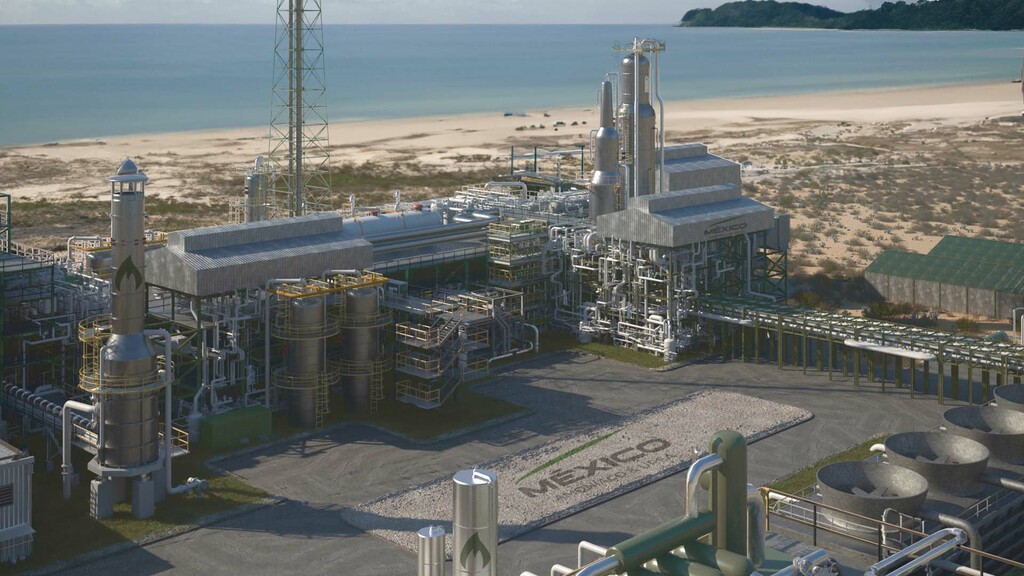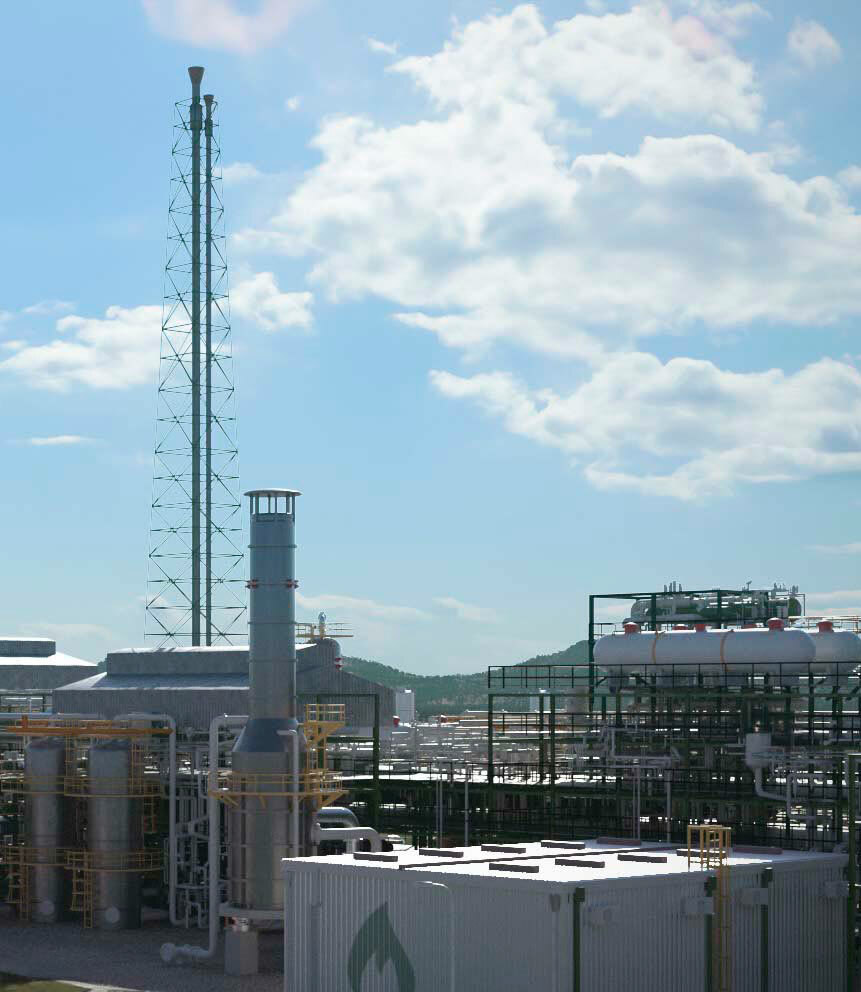México Amoníaco y Urea is developing a sustainable fertilizer plant in Sonora, along Mexico's Pacific coast, with an annual capacity of more than 900,000 tons of low-carbon nitrogen fertilizers.
The State of Sonora is strategically located relative to markets in the United States and Canada, and for trans-Pacific trading with Asia, in addition to being a relevant node for the Mexican domestic market.
México Amoníaco y Urea is working with best-in-class partners, ensuring a high-quality standard and lower-risk construction and operation.

Currently, there are favorable conditions to install an industrial plant in the state of Sonora to produce Blue Ammonia and Urea using natural gas as feedstock. The project is attractive thanks to low-cost natural gas from the Permian Basin of South Texas and immediate access to the Pacific Ocean. In addition, there is a growing global demand for ammonia and its derivatives (mainly nitrogen fertilizers). The available pipeline infrastructure connecting to Mexico's Pacific Coast can give access to low-cost U.S. natural gas and, together with the excellent solar resources in Sonora, could provide Low-Carbon hydrogen, ammonia, urea, and derived products at competitive prices. The project's geographic location will allow easy access to the Asia-Pacific market, the West Coast of the United States, Canada, and Central and South American countries.
Ammonia is a high-value-added chemical product in high demand globally. It has multiple applications such as the production of nitrogen fertilizers, synthetic chemicals, and explosives for the mining industry. Nitrogen fertilizers are currently required to produce about 50% of the world's food, making them a critical resource for global food security. Urea, the main ammonia-based product, is the most widely used nitrogen fertilizer in the world, although it also has other industrial uses. Ammonium Nitrate is also one of the main precursors for the manufacture of explosives for the mining industry.
The Sonora plant will drastically reduce the dependence on imported fertilizers for Mexican farmers and will be near to the most important markets in the U.S.
Ammonia is mainly produced from natural gas as a feedstock. The process consists of transforming natural gas into hydrogen by methane reforming in a series of thermal and catalytic processes and then adding nitrogen to obtain ammonia. Simultaneously, the carbon produced during the process is separated as CO2, and can be captured and stored for use in other industries.
Ammonia can be used as feedstock to produce urea or other derivatives or sold directly to domestic and international markets.
The urea production process consists of two reaction steps at high pressure and temperature, feeding ammonia and CO2 as feedstock. In the first step, ammonia and CO2 are combined producing ammonium carbamate and releasing heat (exothermic reaction). Subsequently, the ammonium carbamate is transformed into urea and water in a second reactor. The reaction products and impurities are then separated, and finally, the molten urea is solidified into 2-4 mm granules. Most of the heat generated in the first reaction step is used to produce steam, which is used in the rest of the plant to optimize energy consumption.

The project will generate a strong social and economic impact for both the state and the local population. It is estimated that the plant could generate more than 200 direct, well-paid jobs and 1,000 indirect jobs.
The agricultural industry in the region will also benefit by guaranteeing the supply of urea at competitive prices, eliminating shortages and speculation. The plant will also serve as an anchor to develop additional industries such as manufacturing of textiles, explosives, plastics, pesticides, and other chemicals.
The Sonora Plant is designed for up to 99% carbon-free liquid ammonia from natural gas. This will be relevant in the coming years when carbon taxes rise, and low-carbon products are required in most industries and markets.
The low-carbon technologies can be implemented through systems upgrades later making the initial construction cost like conventional installations. This reduces risks and maximizes the technical and economic viability of the project in the face of future environmental restrictions.
